Abstract
Dimmick, Robert L. (University of California, Berkeley). Rhythmic response of Serratia marcescens to elevated temperature. J. Bacteriol. 89:791–798. 1965.—Populations of Serratia marcescens of varied ages and pretreatments, which had been grown in a chemically defined medium, were subjected to thermal stress at 50 to 56 C. The numbers of survivors were plotted vs. time to form survivor curves, and the curves were assembled to form three-dimensional models. The manner in which survivors varied as a function of age and time of heating was variable and often rhythmic. Different three-dimensional patterns were found when different inoculum for the test culture was used. Apparently some “dead” cells again produced colonies after extended heating periods (recuperation); this tendency varied with the age of the culture. Diminutive colony forms, which produced normal colonies upon transfer, appeared and disappeared during heating; this tendency fluctuated with age. It is suggested that survivor curves represent a distribution of resistant forms within the population, and that this distribution varies in a manner best described in terms of servomechanistic response within each cell and within a given culture. Difficulties of attempting to relate changes in specific molecular species to subsequent whole-cell responses are discussed.
Full text
PDF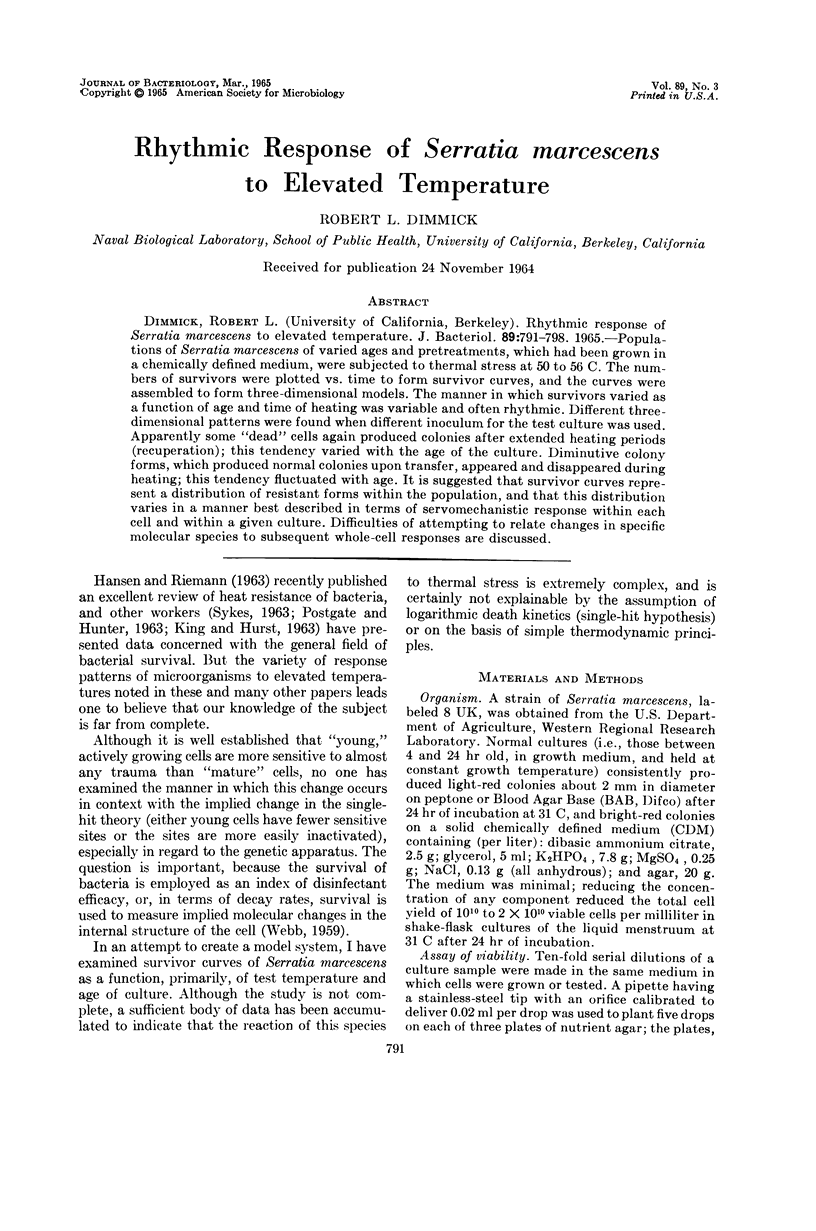
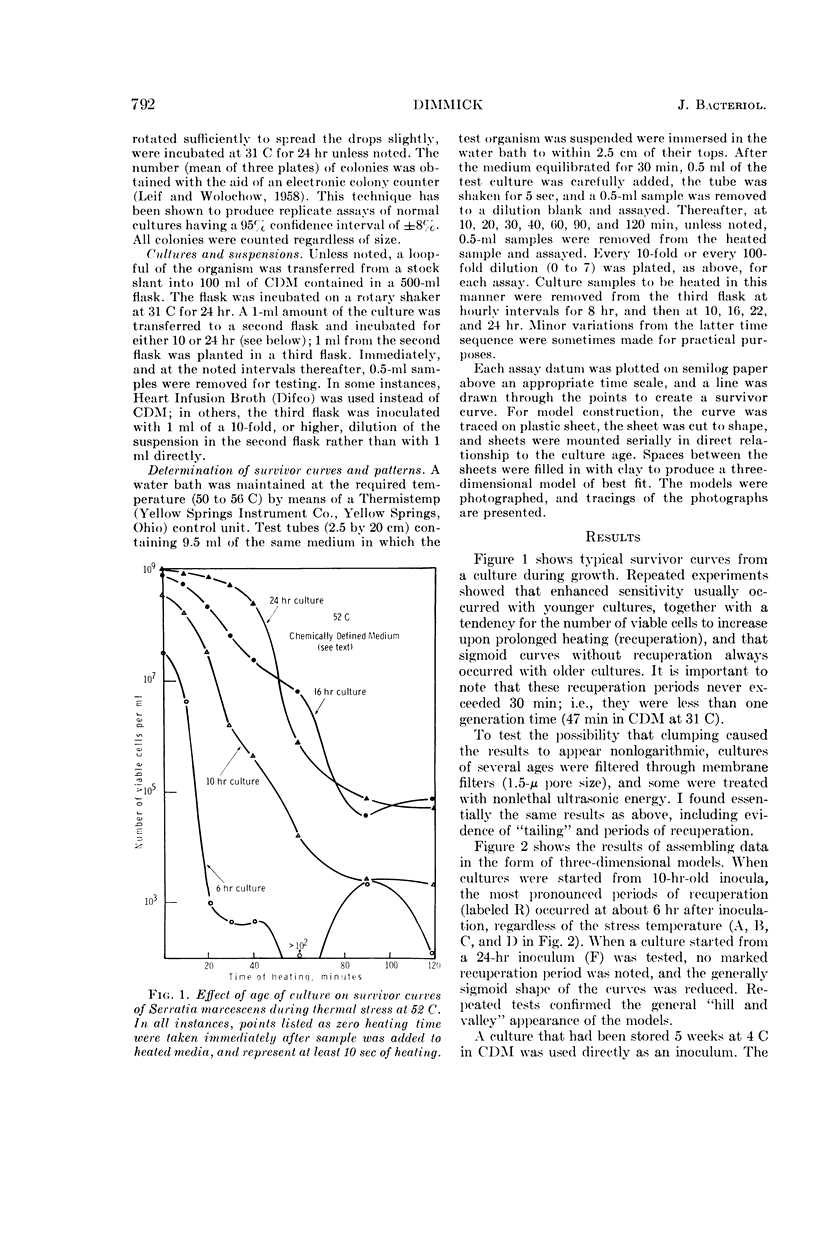
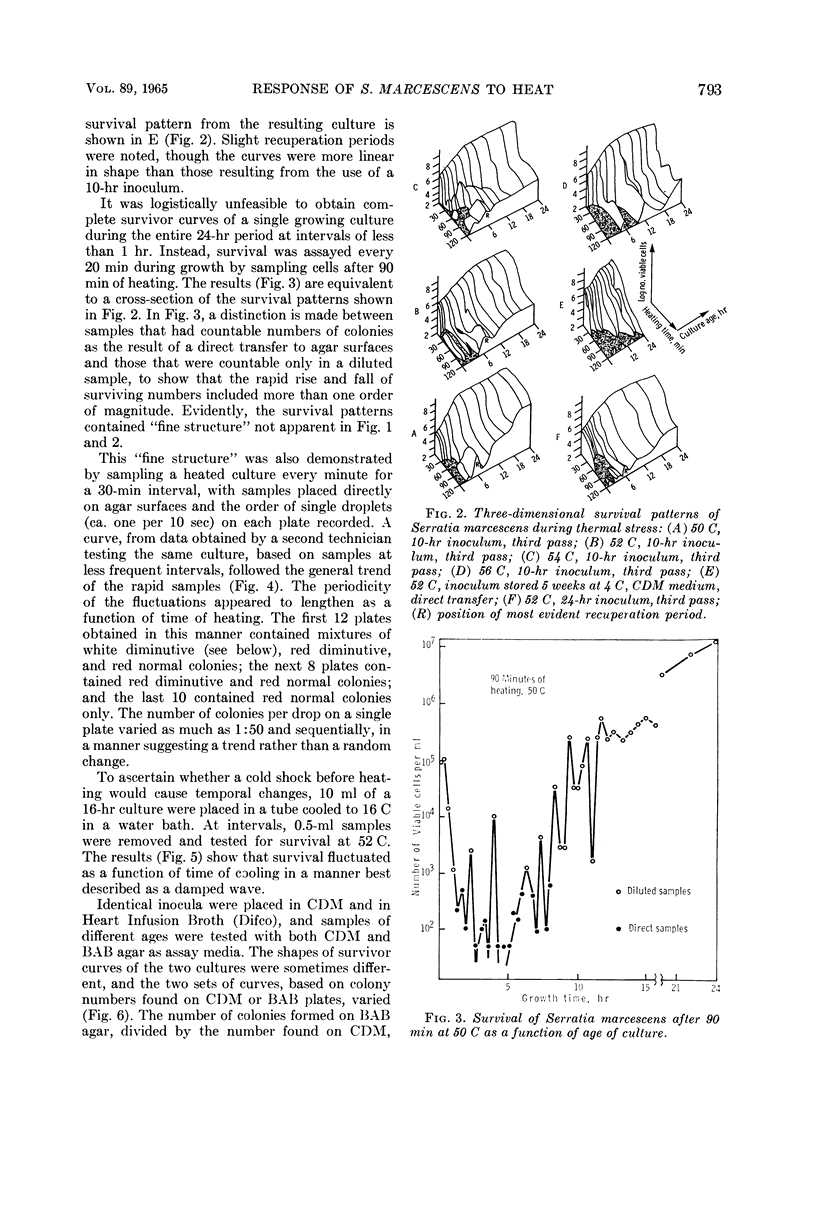
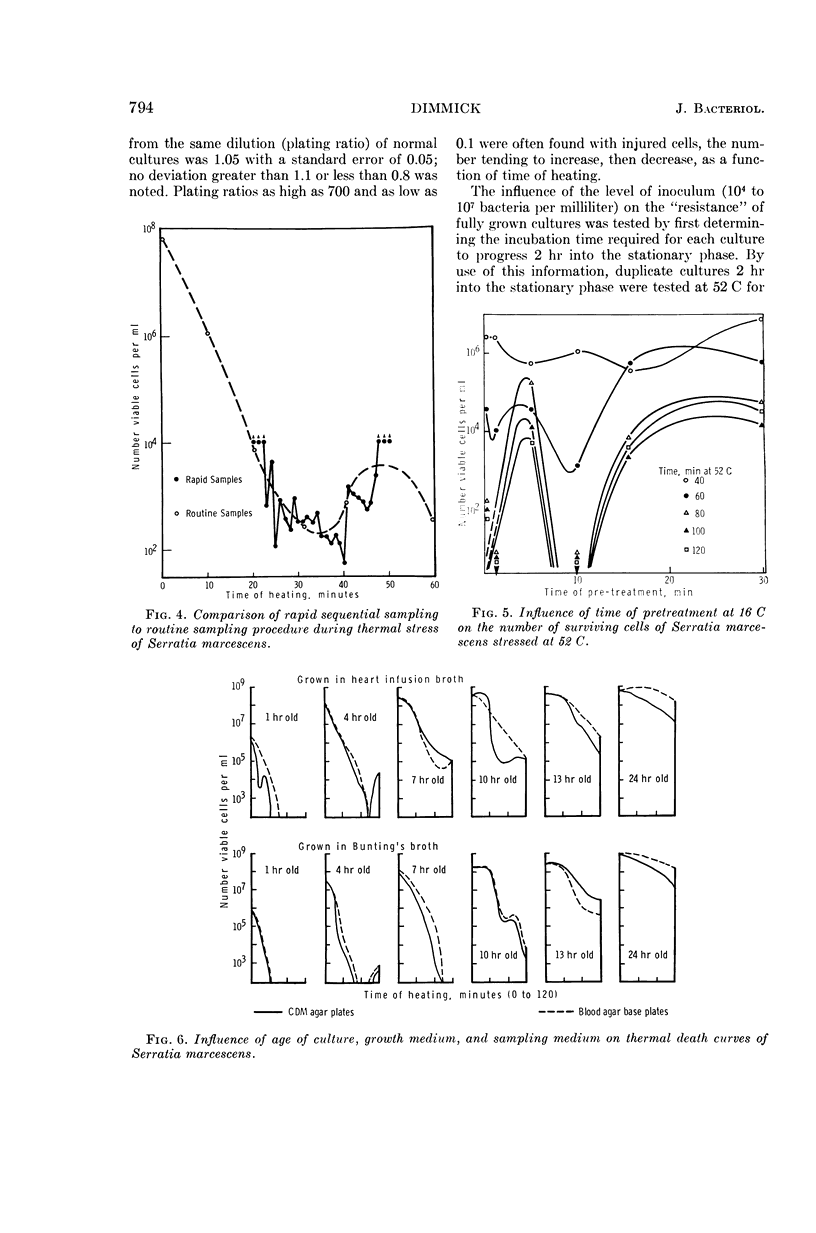
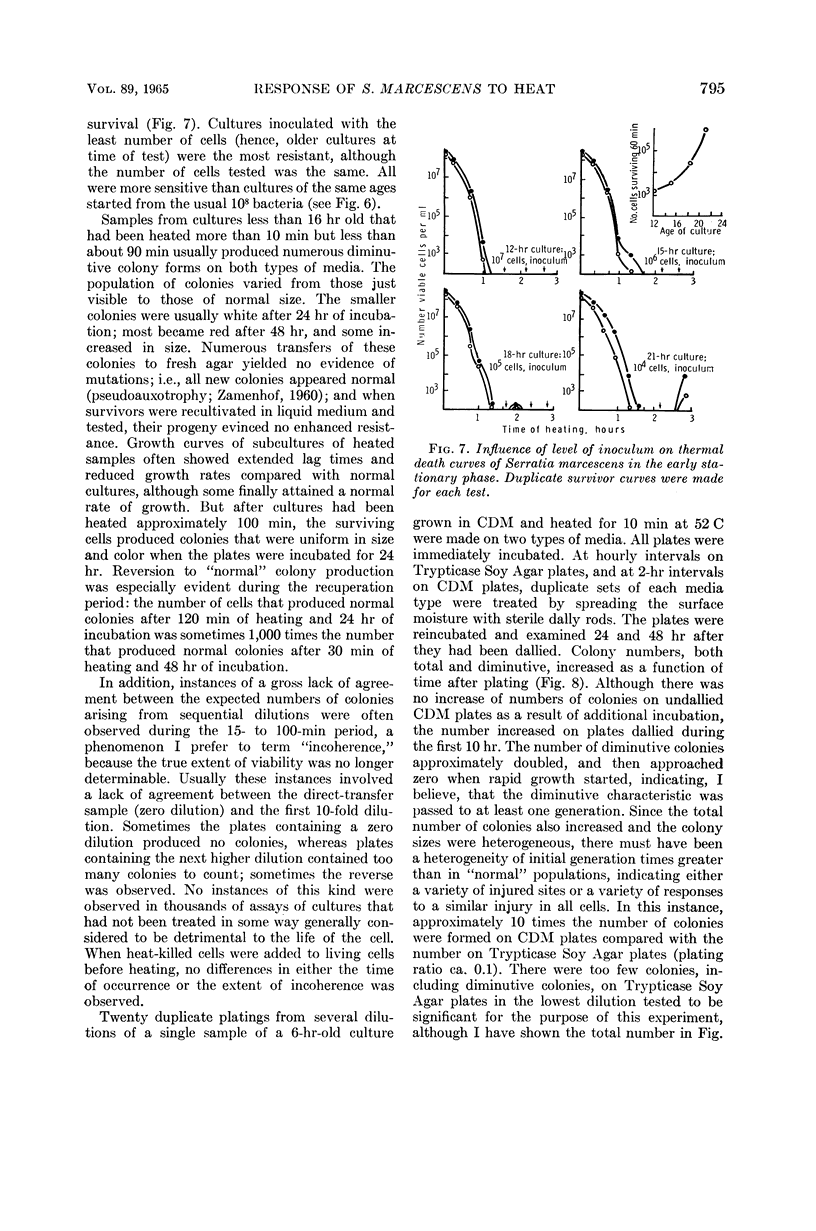
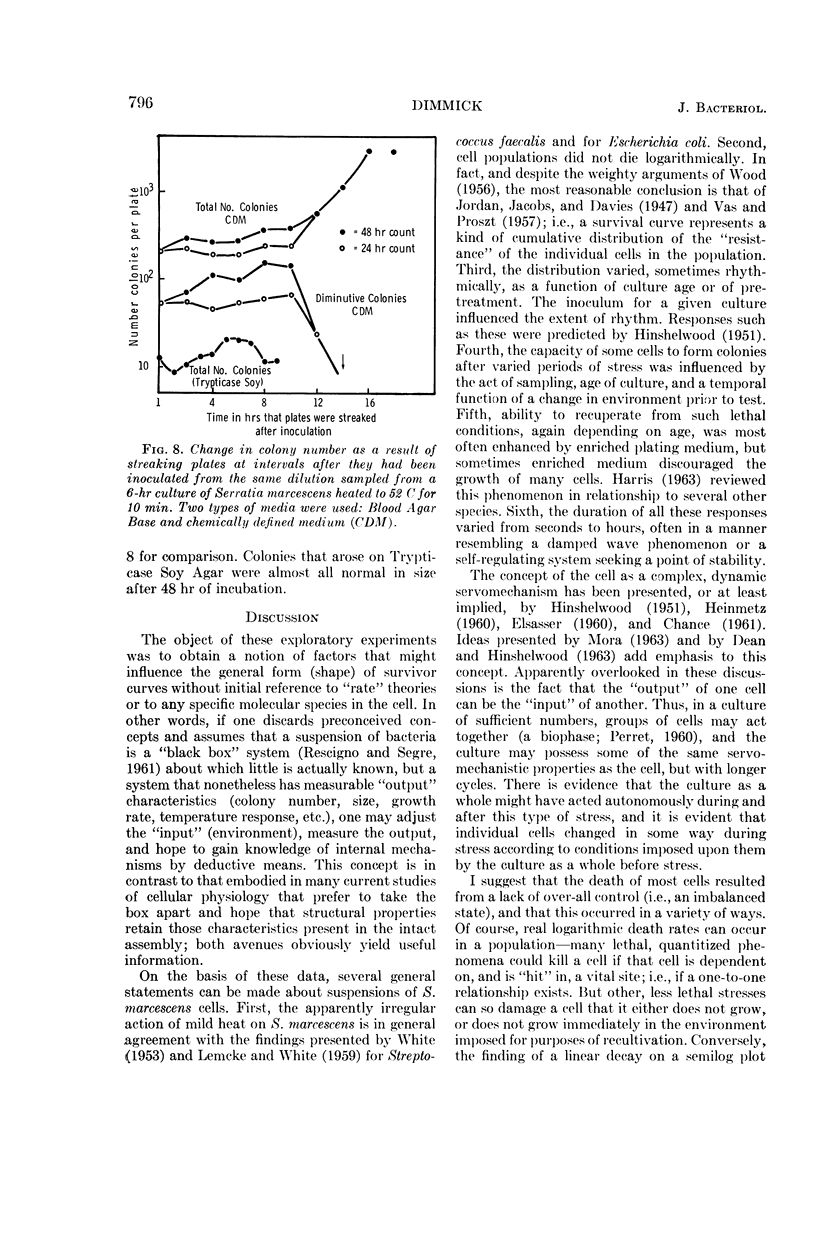
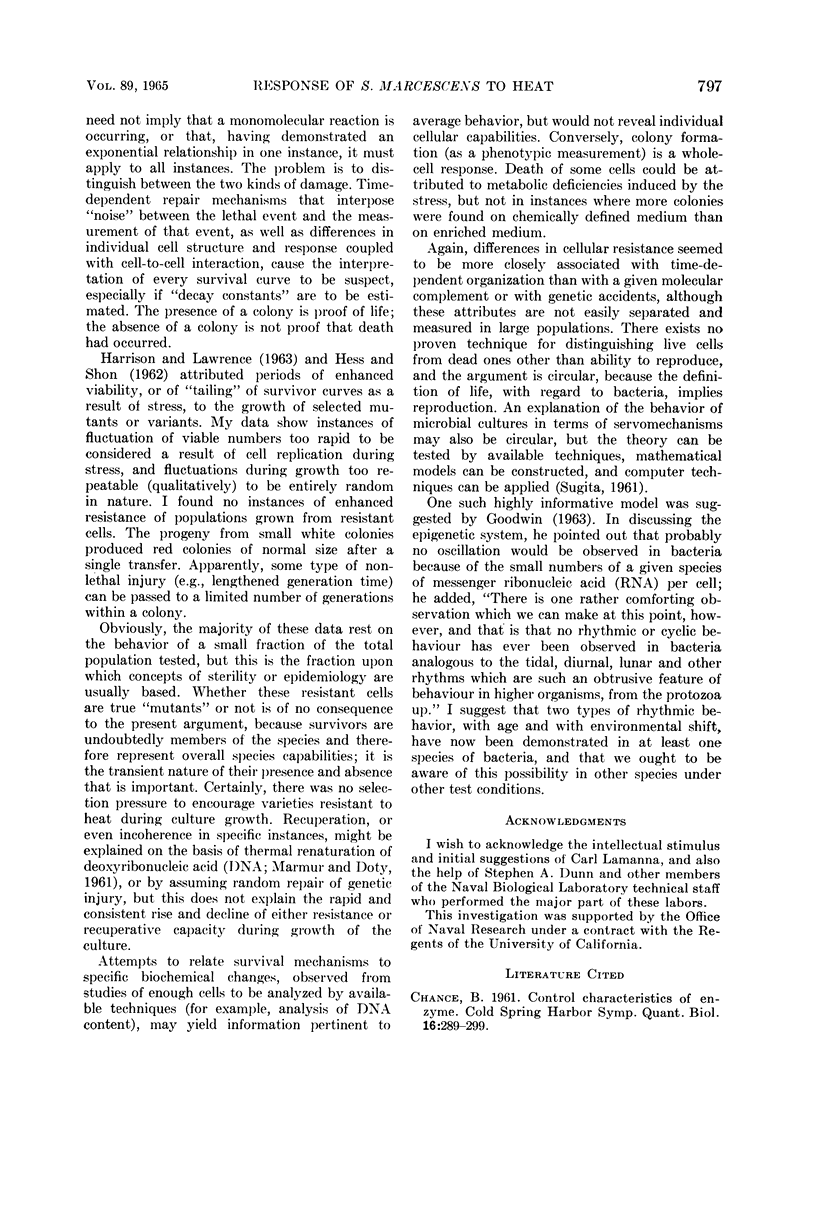
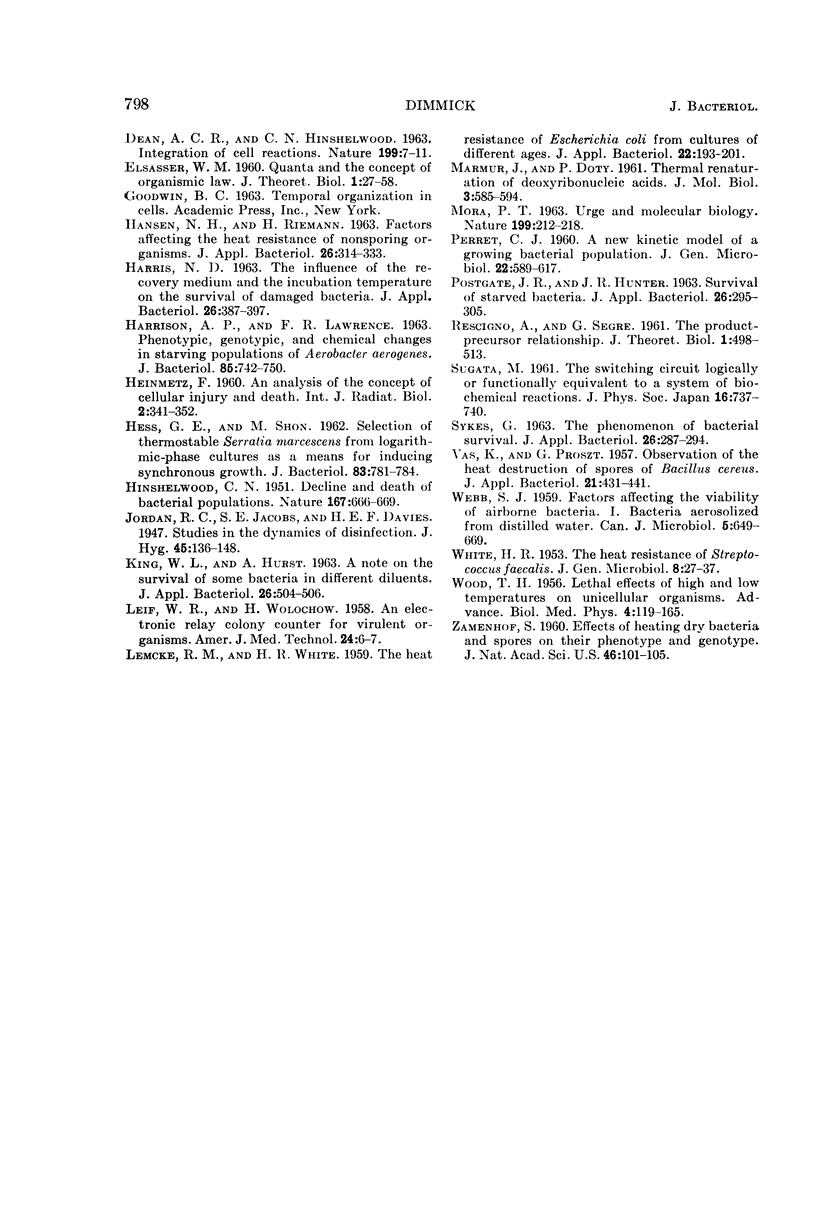
Selected References
These references are in PubMed. This may not be the complete list of references from this article.
- DEAN A. C., HINSHELWOOD C. INTEGRATION OF CELL REACTIONS. Nature. 1963 Jul 6;199:7–11. doi: 10.1038/199007a0. [DOI] [PubMed] [Google Scholar]
- ELSASSER W. M. Quanta and the concept of organismic law. J Theor Biol. 1961 Jan;1:27–58. doi: 10.1016/0022-5193(61)90025-x. [DOI] [PubMed] [Google Scholar]
- HARRISON A. P., Jr, LAWRENCE F. R. PHENOTYPIC, GENOTYPIC, AND CHEMICAL CHANGES IN STARVING POPULATIONS OF AEROBACTER AEROGENES. J Bacteriol. 1963 Apr;85:742–750. doi: 10.1128/jb.85.4.742-750.1963. [DOI] [PMC free article] [PubMed] [Google Scholar]
- HEINMETS F. An analysis of the concept of cellular injury and death. Int J Radiat Biol Relat Stud Phys Chem Med. 1960 Oct;2:341–352. doi: 10.1080/09553006014550471. [DOI] [PubMed] [Google Scholar]
- HESS G. E., SHON M. Selection of thermostable Serratia marcescens from logarithmic-phase cultures as a means for inducing synchronous growth. J Bacteriol. 1962 Apr;83:781–784. doi: 10.1128/jb.83.4.781-784.1962. [DOI] [PMC free article] [PubMed] [Google Scholar]
- HINSHELWOOD C. Decline and death of bacterial populations. Nature. 1951 Apr 28;167(4252):666–669. doi: 10.1038/167666a0. [DOI] [PubMed] [Google Scholar]
- LEIF W. R., WOLOCHOW H. An electronic relay colony counter for virulent organisms. Am J Med Technol. 1958 Jan-Feb;24(1):6–7. [PubMed] [Google Scholar]
- MARMUR J., DOTY P. Thermal renaturation of deoxyribonucleic acids. J Mol Biol. 1961 Oct;3:585–594. doi: 10.1016/s0022-2836(61)80023-5. [DOI] [PubMed] [Google Scholar]
- MORA P. T. URGE AND MOLECULAR BIOLOGY. Nature. 1963 Jul 20;199:212–219. doi: 10.1038/199212a0. [DOI] [PubMed] [Google Scholar]
- RESCIGNO A., SEGRE G. The precursor-product relationship. J Theor Biol. 1961 Oct;1:498–513. [PubMed] [Google Scholar]
- WHITE H. R. The heat resistance of Streptococcus faecalis. J Gen Microbiol. 1953 Feb;8(1):27–37. doi: 10.1099/00221287-8-1-27. [DOI] [PubMed] [Google Scholar]
- WOOD T. H. Lethal effects of high and low temperatures on unicellular organisms. Adv Biol Med Phys. 1956;4:119–165. doi: 10.1016/b978-1-4832-3110-5.50008-x. [DOI] [PubMed] [Google Scholar]
- Zamenhof S. EFFECTS OF HEATING DRY BACTERIA AND SPORES ON THEIR PHENOTYPE AND GENOTYPE. Proc Natl Acad Sci U S A. 1960 Jan;46(1):101–105. doi: 10.1073/pnas.46.1.101. [DOI] [PMC free article] [PubMed] [Google Scholar]


